 String of pearls is an unusual succulent with nearly spherical leaves from South Africa. Named after British botanist Gordon Rowley, the species was recently moved from huge genus Senecio (which contains not just succulents but also common weeds like common groundsel) into the new genus Curio, but is likely to be identified as Senecio rowleyanus in literature and the horticulture trade. This tender evergreen perennial in the daisy family (Asteraceae) is native to dry areas of the eastern Cape of South Africa. There is also a variegated form with wide white stripes and sections (which might actually be S. herreianus which has slightly larger, elongated and striped round leaves and is also called string of pearls or string of beads).
String of pearls is an unusual succulent with nearly spherical leaves from South Africa. Named after British botanist Gordon Rowley, the species was recently moved from huge genus Senecio (which contains not just succulents but also common weeds like common groundsel) into the new genus Curio, but is likely to be identified as Senecio rowleyanus in literature and the horticulture trade. This tender evergreen perennial in the daisy family (Asteraceae) is native to dry areas of the eastern Cape of South Africa. There is also a variegated form with wide white stripes and sections (which might actually be S. herreianus which has slightly larger, elongated and striped round leaves and is also called string of pearls or string of beads). 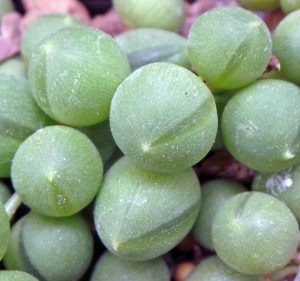 The plant grows from weak surface roots, producing trailing stems up to three feet long on the ground which can root where they touch soil to form dense mats. It often grows under bushes or between rocks which provide some protection from intense sunlight. The alternate, water-storing leaves are the size and shape of small peas (each to 1/4” diameter) with a small pointed tip on the end and a thin stripe of dark green along the side. The round shape of the leaves minimizes the surface area exposed to dry desert air and therefore reduces evaporative water loss but also reduces the surface area where photosynthesis can occur compared to a normal thin, flat leaf. The ban of darker, translucent tissue on the side of the leaf is an “epidermal window” which allows light to enter the interior of the leaf, effectively increasing the area available for photosynthesis. This adaptation to arid environments is seen in several other succulents from southern Africa, including the related Senicio radicans, and in baby toes (Fenestraria spp.) and Haworthia cooperi which grow underground, exposing only the leaf tips.
The plant grows from weak surface roots, producing trailing stems up to three feet long on the ground which can root where they touch soil to form dense mats. It often grows under bushes or between rocks which provide some protection from intense sunlight. The alternate, water-storing leaves are the size and shape of small peas (each to 1/4” diameter) with a small pointed tip on the end and a thin stripe of dark green along the side. The round shape of the leaves minimizes the surface area exposed to dry desert air and therefore reduces evaporative water loss but also reduces the surface area where photosynthesis can occur compared to a normal thin, flat leaf. The ban of darker, translucent tissue on the side of the leaf is an “epidermal window” which allows light to enter the interior of the leaf, effectively increasing the area available for photosynthesis. This adaptation to arid environments is seen in several other succulents from southern Africa, including the related Senicio radicans, and in baby toes (Fenestraria spp.) and Haworthia cooperi which grow underground, exposing only the leaf tips.  String of pearls blooms in summer, producing ½ inch compound, daisy-like flowers of white discoid flowers with long red stamens and bright yellow anthers on 1½ inch long peduncles. The small flowers are not showy but are fragrant; it is said to have a sweet and spicy, cinnamon-like scent. The flowers are followed by multiple seeds, each with a white cottony pappus which aids in dispersal by the wind.
String of pearls blooms in summer, producing ½ inch compound, daisy-like flowers of white discoid flowers with long red stamens and bright yellow anthers on 1½ inch long peduncles. The small flowers are not showy but are fragrant; it is said to have a sweet and spicy, cinnamon-like scent. The flowers are followed by multiple seeds, each with a white cottony pappus which aids in dispersal by the wind. 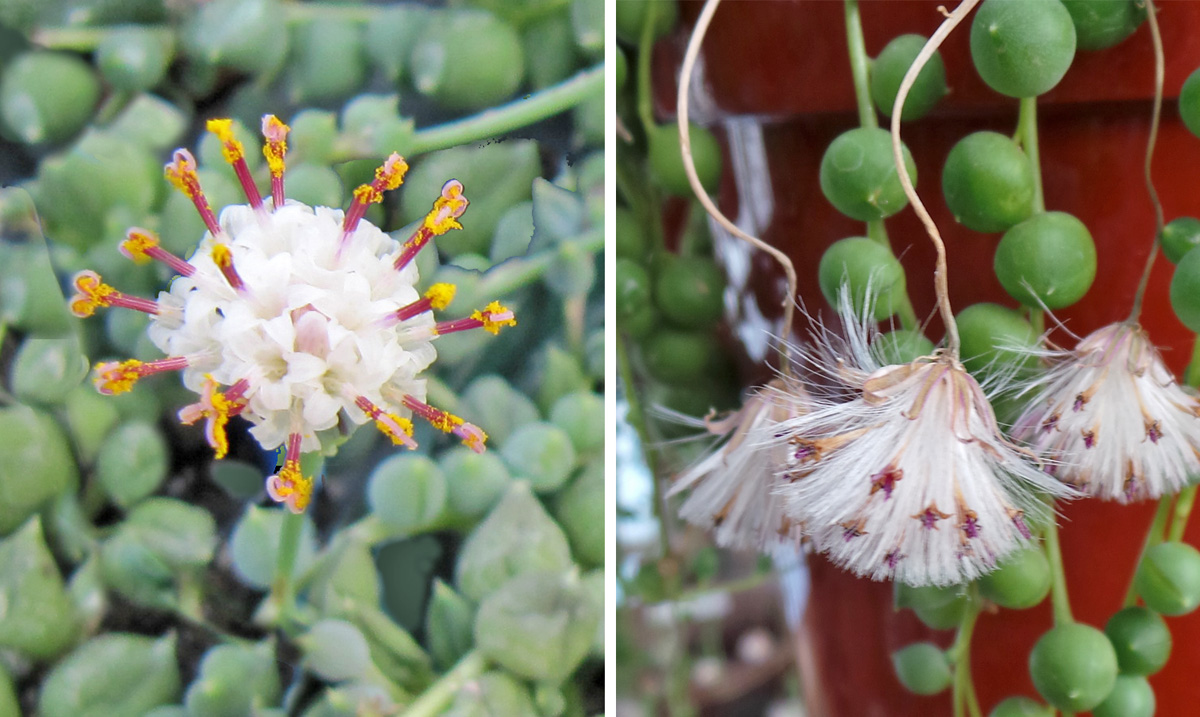 String of pearls is commonly grown as a houseplant or an outdoor ornamental in frost-free climates. It is often grown in hanging baskets to allow the trailing stems to spill downward. It could also be grown in a flat dish allowing it to maintain the trailing growth habit seen in the wild. Indoor containers can be moved outside for the growing season but need to be acclimated gradually to prevent sunburn, should be protected from excess rainfall, and must be moved back indoors before frost.
String of pearls is commonly grown as a houseplant or an outdoor ornamental in frost-free climates. It is often grown in hanging baskets to allow the trailing stems to spill downward. It could also be grown in a flat dish allowing it to maintain the trailing growth habit seen in the wild. Indoor containers can be moved outside for the growing season but need to be acclimated gradually to prevent sunburn, should be protected from excess rainfall, and must be moved back indoors before frost. 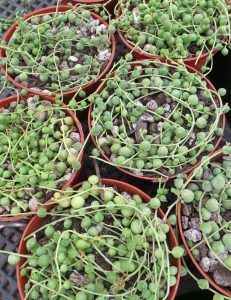 Like other succulents, this plant is relatively low maintenance and only needs bright light, well-drained soil, and infrequent watering. Root rot from overwatering is the most common cause of its demise. Grow in a very well-draining soil mix, such as cactus mix or add inorganic materials such as small pea gravel, sharp sand, poultry grit or pumice to potting medium (up to 1:1 mixture). Use a shallow container since the plants will not produce an extensive root system (and if they are unable to quickly remove moisture from a large soil volume, they will be more susceptible to root rot). Clay containers are better than plastic or ceramic because the material allows evaporation through the sides so the soil will dry out more quickly. Allow the potting medium to dry out completely between waterings, providing more water in summer than in winter when the plant is not actively growing. Providing a rest period during the winter with cool (55-60°F). Dry conditions may promote blooming in summer. Plants need to be watered when the leaves start to look a bit shriveled. Repot every year or two or fertilize lightly in spring. Mealybugs or aphids may infest plants but otherwise they have few pest problems. The leaves are slight toxic; ingestion may cause vomiting or diarrhea the plant’s sap may cause skin irritation or rash in sensitive individuals. Propagate string of pearls by taking 3-4 inch stem tip cuttings. Strip 3-4 leaves from the bottom of the cutting and place in or on moist potting mix (lightly cover the last few bottom nodes) and roots should quickly develop at each node. Mist the soil surface to avoid overwatering until the roots are established. This plant can also be grown from seed but it is not commonly available. – Susan Mahr, University of Wisconsin – Madison
Like other succulents, this plant is relatively low maintenance and only needs bright light, well-drained soil, and infrequent watering. Root rot from overwatering is the most common cause of its demise. Grow in a very well-draining soil mix, such as cactus mix or add inorganic materials such as small pea gravel, sharp sand, poultry grit or pumice to potting medium (up to 1:1 mixture). Use a shallow container since the plants will not produce an extensive root system (and if they are unable to quickly remove moisture from a large soil volume, they will be more susceptible to root rot). Clay containers are better than plastic or ceramic because the material allows evaporation through the sides so the soil will dry out more quickly. Allow the potting medium to dry out completely between waterings, providing more water in summer than in winter when the plant is not actively growing. Providing a rest period during the winter with cool (55-60°F). Dry conditions may promote blooming in summer. Plants need to be watered when the leaves start to look a bit shriveled. Repot every year or two or fertilize lightly in spring. Mealybugs or aphids may infest plants but otherwise they have few pest problems. The leaves are slight toxic; ingestion may cause vomiting or diarrhea the plant’s sap may cause skin irritation or rash in sensitive individuals. Propagate string of pearls by taking 3-4 inch stem tip cuttings. Strip 3-4 leaves from the bottom of the cutting and place in or on moist potting mix (lightly cover the last few bottom nodes) and roots should quickly develop at each node. Mist the soil surface to avoid overwatering until the roots are established. This plant can also be grown from seed but it is not commonly available. – Susan Mahr, University of Wisconsin – Madison
String of pearls, with its unique spherical leaves, is an intriguing succulent that has captivated plant lovers worldwide But where does this drought-tolerant plant come from, and what is its natural habitat like? Let’s take a journey to the native environment of string of pearls to understand how this resilient succulent thrives in the wild
Origin and Distribution
String of pearls, scientifically known as Senecio rowleyanus, is native to the arid regions of southwest Africa. Specifically, it is found growing naturally in the eastern Cape Provinces of South Africa, which have a semi-desert climate. This dry, rocky environment with scarce rainfall provides the conditions that have shaped the distinctive features of string of pearls over time.
In its native habitat string of pearls grows as a sprawling ground cover, its long trailing stems spreading horizontally across the harsh terrain. The plant is well adapted to hot dry climates and is found flourishing in areas with fast-draining sandy soils. Its low spreading growth habit allows it to cloak the ground, forming dense mats in open areas.
Adaptations for Desert Survival
To survive in such a challenging habitat, string of pearls has evolved specialized adaptations that enable it to thrive where other plants cannot.
-
Spherical leaves – The pea-sized, ball-shaped leaves have a minimal surface area, reducing water loss through evaporation. This shape holds moisture more effectively than a flat leaf
-
Tiny succulent texture – The leaves are thick and fleshy, allowing them to store water for long periods and endure drought conditions.
-
Translucent leaf windows – Specialized tissue allows light into the leaf interior, boosting photosynthesis despite the small exterior surface area.
-
Trailing stems – Long stems radiate from the base, hugging the ground and seeking shade and moisture.
-
Rooting stems – Wherever the stems touch soil, they root to spread widely and maximize water access.
-
Dense groundcover – A carpet of interwoven stems and leaves protects the soil underneath, preventing moisture loss.
These specialized adaptations allow string of pearls to not just survive, but thrive in hot, arid environments with limited water resources.
Climate Conditions
The climate where string of pearls grows naturally is characterized by:
- Hot, sunny days with temperatures from 65°F to over 100°F
- Cold nights, with drops of 20-30 degrees from daytime highs
- Low annual rainfall, often less than 20 inches
- Intense, direct sunlight for much of the day
- Fast-draining sandy or rocky soils
- Low humidity – very dry air
- Daily shifts from extreme heat to cold temperatures
- Little protection from sun, wind, and temperature swings
These harsh conditions have shaped the physical traits and growing preferences of string of pearls. The plant is able to remain healthy and beautiful despite the adversity of its native landscape.
Soil and Terrain Needs
In habitat, string of pearls flourishes in rocky, fast-draining soils. It is found growing in crevices, along slopes, and over boulders where water drains rapidly. These rocky sites provide perfect drainage to prevent root rot. The porous surface also supports the long trailing stems, allowing them to spread widely.
When growing string of pearls at home, it’s important to replicate its free-draining soil needs. Use a potting mix formulated for cacti and succulents, containing a high percentage of inorganic materials like perlite, pumice, or gravel. You can further improve drainage by adding extra perlite to the mix. A clay or terracotta pot is ideal as it allows evaporation through the porous walls.
Wildlife Connections
Beyond its physical beauty, string of pearls plays an integral role in its native ecosystem. Its small white flowers produce nectar that attracts insect pollinators which are essential for reproduction. The sprawling mats also provide critical habitat, shelter, and shade for small animals like lizards, rodents, and invertebrates. By supporting this web of life, string of pearls contributes to the biodiversity of its harsh environment.
Seasonal Growth Cycle
In habitat, string of pearls experiences distinct seasonal shifts which influence its growth patterns:
-
Rainy season: Actively grows and spreads, using the increased moisture to replenish water storage in its leaves.
-
Dry season: Enters dormancy, slowing growth to conserve resources. Uses water reserves in leaves for maintenance and survival.
-
Blooming season: Produces small white flowers after the rainy period, relying on insect pollination for reproduction.
-
Seed dispersal: In midsummer, sets seed to scatter and spread progeny to new locations.
Understanding this natural cycle helps guide care at home, allowing the plant periods of growth and rest that support its overall health.
Challenges in the Wild
Despite its adaptations, string of pearls faces considerable challenges in its native habitat:
-
Limited rainfall – Must rely solely on its water storage abilities to endure drought.
-
Intense sun – Scorching sunlight and heat are constant stresses. Cool microclimates offer relief.
-
Temperature extremes – Adapts its growth to survive swings from frigid nights to blazing days.
-
Poor rocky soils – Must efficiently extract water and nutrients from its harsh terrain.
-
Competition – Persistently spreads and reproduces to dominate the landscape.
The challenges string of pearls overcomes in its natural environment are remarkable. Understanding these hardships allows us to support the plant when cultivated in home gardens.
Caring for String of Pearls at Home
To keep string of pearls happy indoors, the key is mimicking the conditions of its natural habitat:
-
Provide very bright, indirect light
-
Allow the soil to dry out between waterings
-
Use a fast-draining cactus/succulent mix
-
Limit water in winter when dormant
-
Avoid overwatering which can lead to rot
-
Let it trail and cascade from pots and hanging baskets
By observing and learning from its extraordinary adaptations, we can appreciate string of pearls as a survivor. Caring for it as an indoor plant allows us to bring a touch of wild beauty into our homes.
Journeying into the native environment of string of pearls provides fascinating insights into how this alluring succulent thrives in harsh desert landscapes. Understanding its natural habitat and growth preferences enables us to become better caretakers. Whether enjoyed indoors or discovered in the wilds of South Africa, the resilient string of pearls continues to enchant plant aficionados with its singular spherical leaves and trailing stems. With a little knowledge of its ecology, we can support its health and beauty wherever we choose to cultivate this charming succulent.
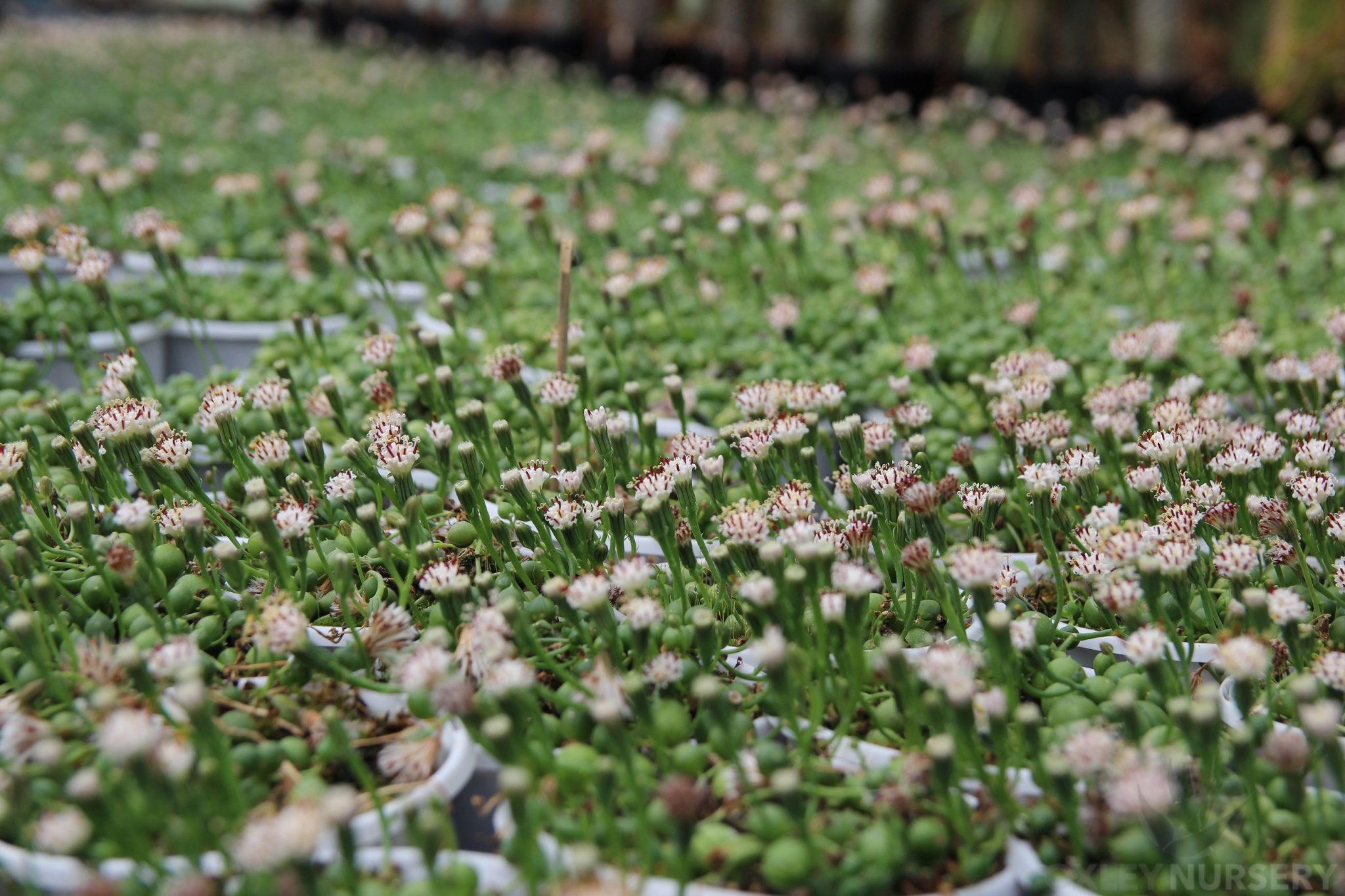
Latest from Wisconsin Yard & Garden
If you’re unable to find the information you need, please submit your gardening question here:
Featured Articles by Season
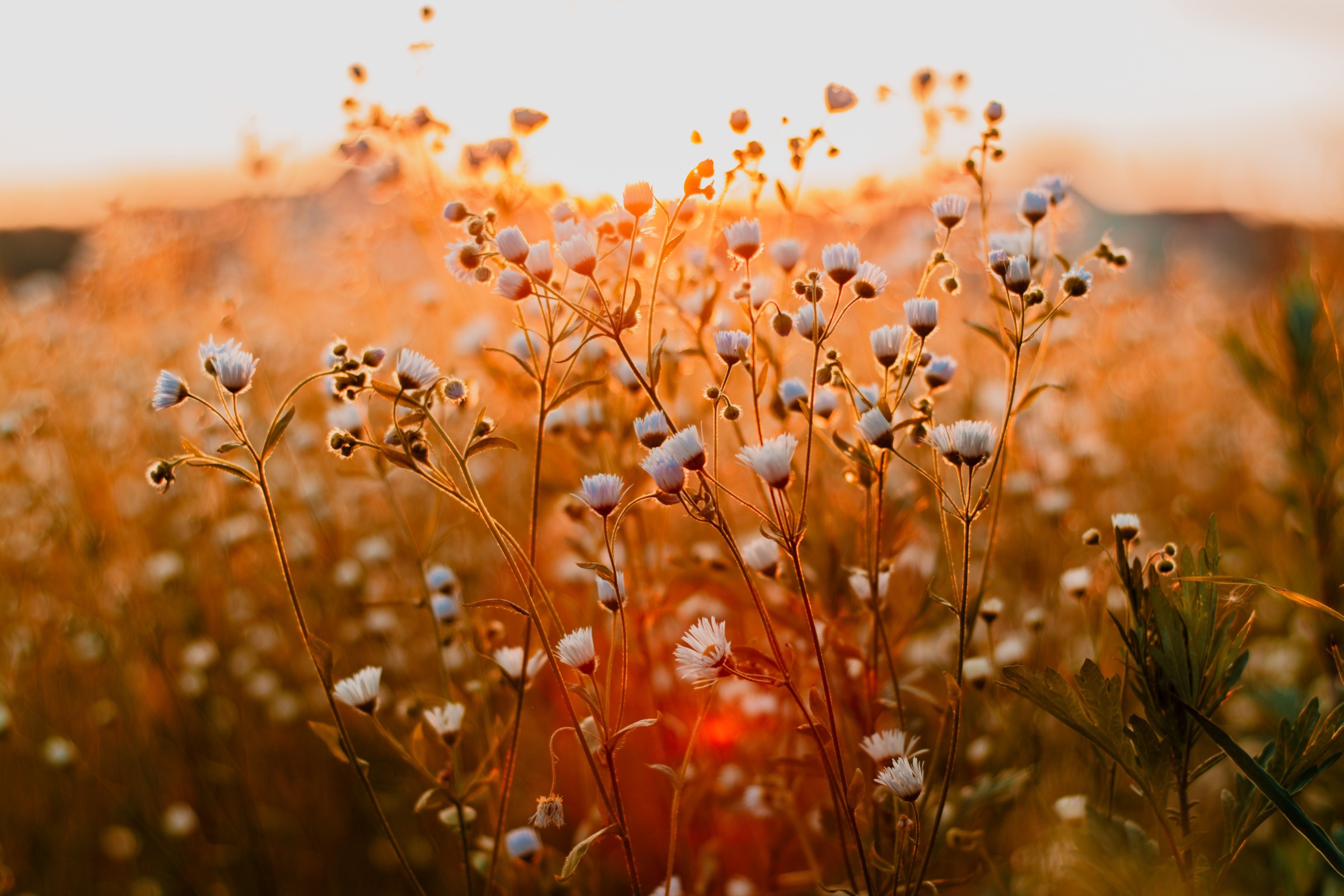
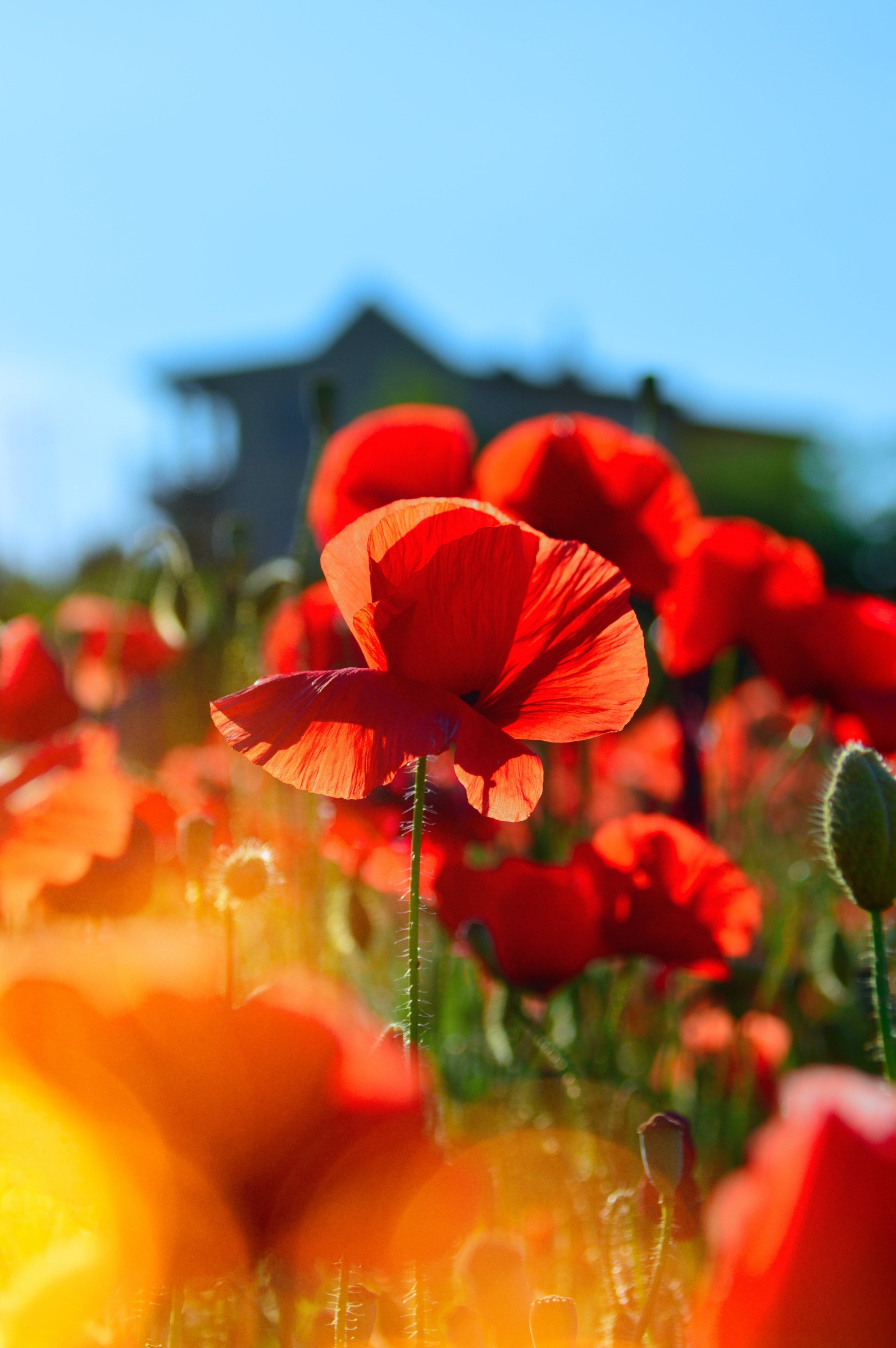
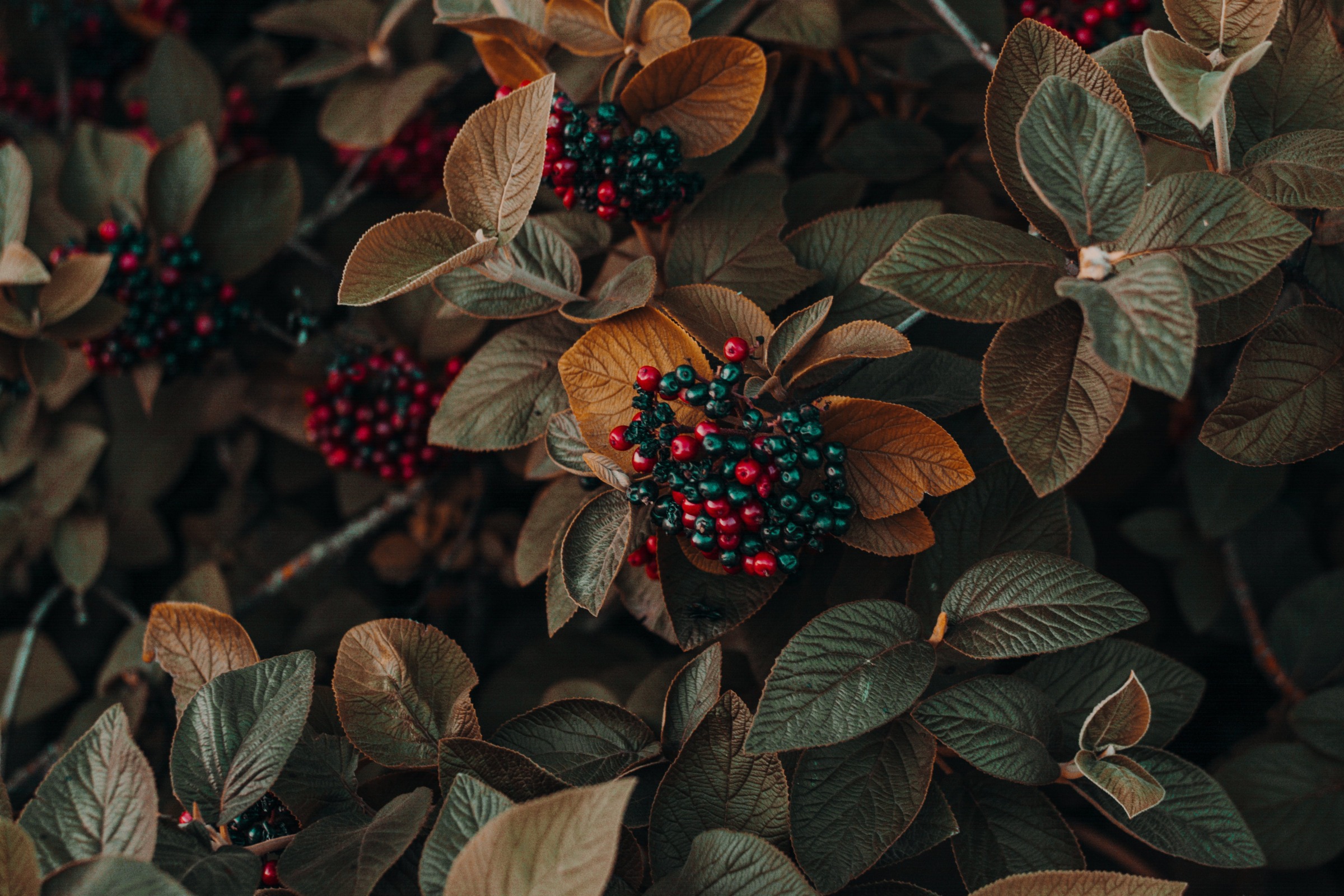
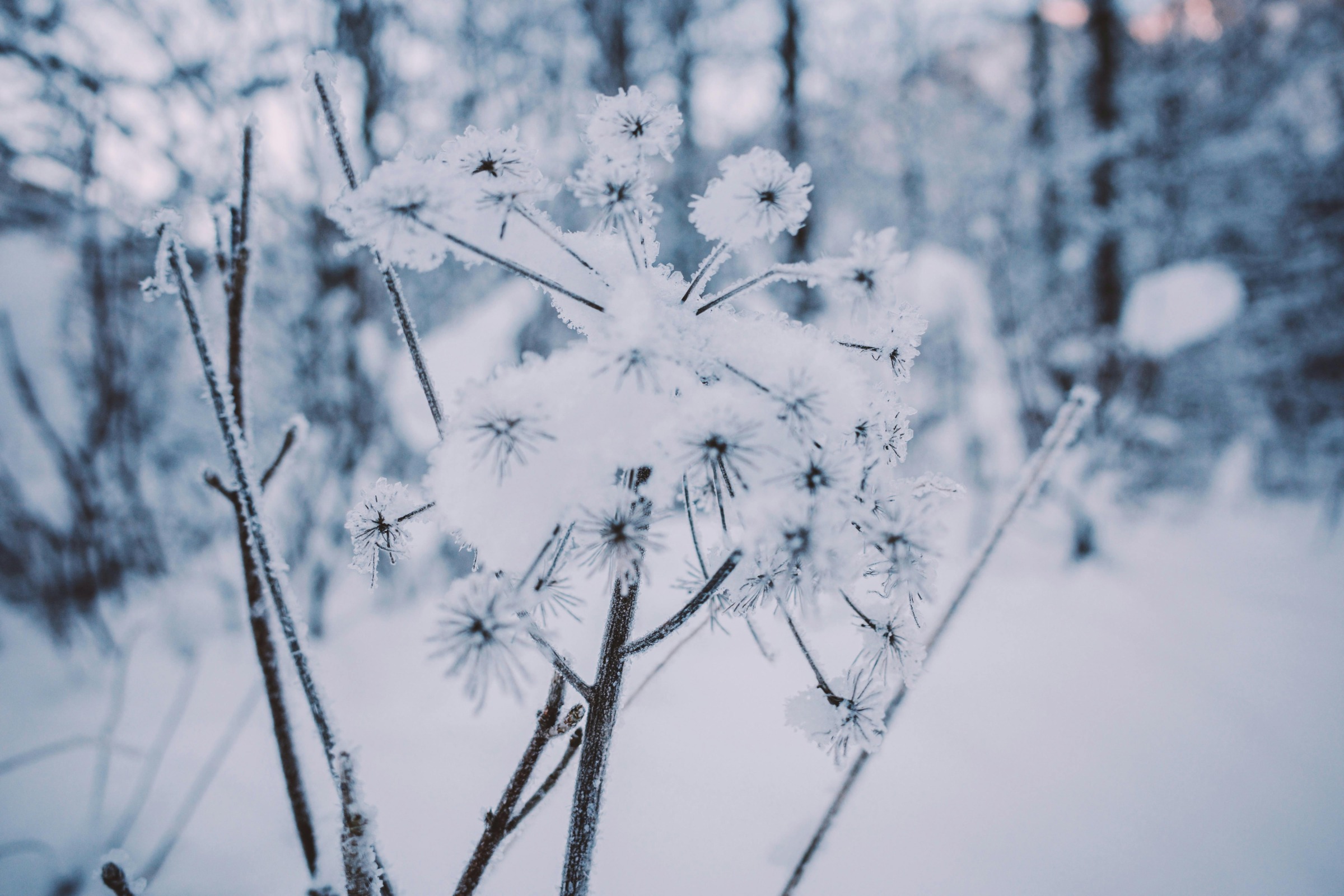
PROPAGATION TIPS | 3 EASY WAYS TO PROPAGATE STRING OF PEARLS | SUCCULENT PROPAGATION
FAQ
Do strings of pearls grow in the wild?
All of these stringy plants hail from arid regions of South Africa. In the wild, they mostly scramble over rocks and bushes, often emerging out of cracks in rock in search of the right microclimate.
Where do strings of pearls naturally grow?
This tender evergreen perennial in the daisy family (Asteraceae) is native to dry areas of the eastern Cape of South Africa. There is also a variegated form with wide white stripes and sections (which might actually be S.
Is string of pearls rare?
Variegated succulents, like this variegated string of pearls, are considered rare and sought after by collectors and gardeners for their unique appearance.
What is the native environment of string of pearls?
In its natural habitat of the rocky terrain of South Africa’s Cape Province, the string of pearls will grow creeping shoots that form a mat along the ground, so it is accustomed to some shade and a warm climate. It prefers free-draining soil that gets a good soak but is allowed to dry out between watering.
